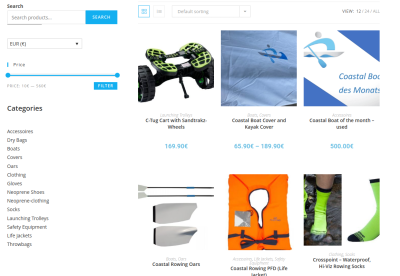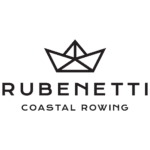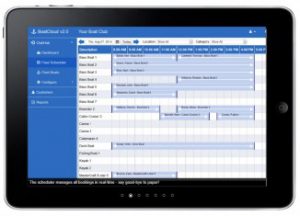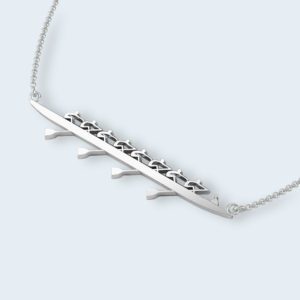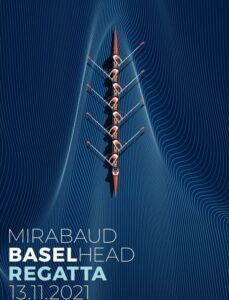Cox boxes are an important part of rowing equipment for crew boats these days. Over the past couple of years, the principal manufacturers have been working hard to overcome some of the problems, breakages and failures that clubs experience with electronic equipment working in a watery environment.
I was asked to write a comparative article about cox boxes and I want to focus on the design improvements that have come out recently. The manufacturers have been working hard to “idiot proof” their cox boxes and use improved materials to combat the breakages and make them more rugged for regular club use.
Designing amplification equipment that will work reliably when in close contact to both water, careless athletes and in open rowing club situations must be any engineer’s nightmare. It is relatively simple to make an amplifier and microphone work – but to ensure that wires don’t get stripped as they are removed from plugs and are not trailed along the ground hanging from a boat or yanked out of place by an unfortunate misplaced foot is not within the control of a product designer.
The first problem is wires stripping at the point where the speaker loom plugs into the amplifier box. Nielsen-Kellerman has changed the input wire so that it is now enclosed in a plastic casing, moulded in an L-shape with finger grips. This looks very solid and should be a major improvement for clubs whose equipment gets a lot of use. Coxmate has taken a different route to overcome the same problem. Instead of connecting the cox box to the speakers with a wire, they use a magnetic connection. The coxswain just puts the box onto the mounting plate and corresponding north/south magnets hold it in place. It is also impossible to mount upside down!
Failures within the wiring loom are the second common problem for many – when there are several speakers in an eight how do you find out which one has failed? And with the new buoyancy requirement of sealed compartments, it is increasingly difficult to remove wires without breaking the seal. There are two issues here, one is finding the failed part of the wiring loom, and the second is extracting and replacing the wires.
Finding the failed part of the wire is easiest with Coxmate speaker looms. Their product is modular (bow section, middle sections and a seat magnet for stroke) each one plugs into the next and so it is easy to take one section out, test it and discover where the fault lies. Additionally the joins have metal clamps and coloured spots to line up the joins correctly.
RowData leads the way with replacing wires. They supply cable glands (£1 each) which are glued into the hole drilled through the bulkhead and so breaking and replacing these is a small price as the wires and joints can be fed through the hole without having to cut the wire and re-crimp the joins. Coxmate also supplies a sealing bung that is conical and does not require gluing to do the same job.
Kat Astley at Christ’s College Cambridge BC commissioned Janousek Racing Boats to supply an 8 with 25mm electrical conduit tubing along the hull so the wiring does not disturb the sealed compartments and can be replaced with ease.
But the biggest recent change has been the inclusion of speed measurement within the cox box unit. Previously, if you wanted to measure boat speed, a second speed measurement unit was needed to display all the information but now Coxmate has brought out the SCT which does both in a single box.
Fitting onto a magnetic mount, the SCT can measure speed in either m/s or splits (100m, 250m, 500m or 1000m), it has a ‘cover’ measure of distance moved each stroke and can record sessions for later download onto a PC with software for analysis.
Speed is measured either with an impeller and wire fitted to the bows of the boat (to overcome the boundary layer) or using a global positioning satellite receiver (GPS). The former gives stroke by stroke speed curves on the software and the latter gives average speed. This is because GPS only updates every 0.8 seconds which isn’t fast enough to give meaningful data within a single stroke cycle.
I used the Coxmate SCT for the FISA World Cup races in Seville during February and found that although the menus took a bit of getting used to, the data was fantastic to have in front of me. I can see exactly when the crew slows down during a race and whether they have maintained the speed in a push.
Finally, I should also talk about cox box repairs. If you need your cox box repairing, Davies Row Tech will still mend their own units although they have stopped manufacture; RowData will repair both NK and RowData units, Oarsport mend the NK units they sell and Rowperfect UK only repairs Coxmate. RowData and Rowperfect have a good reputation for rapid turn-rounds if you need a repair mid-season.
- RowData 07946526135
- Oarsport 0115 981 8183
- Coxmate 07970 734330
- Davies RowTech
A comparison of
prices and features (incl VAT; excluding shipping) 2008 prices
|
Product |
Nielsen-Kellerman |
£ NK |
Coxmate |
£ Coxmate |
RowData |
£ RowData |
|
Voice Only |
Cox Vox |
£320 |
AA Kit |
£200 |
Cox-Amp Basic |
£149 |
|
Rate / Time |
Cox Box |
£425 |
SRT Kit |
£275 |
Cox-Amp Pro |
£325 |
|
Speed |
Cox Vox + SpeedCoach XL1 + software |
£635 |
SCT Kit + GPS + software |
£710 |
|
|
|
4s wiring |
2 Speaker loom |
£130 |
2 Speaker loom |
£75 |
2 Speaker loom |
£95 |
|
8s wiring |
3 Speaker loom |
£160 |
3 (4) Speaker loom |
£120 (£140) |
3 Speaker loom |
£125 |

